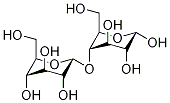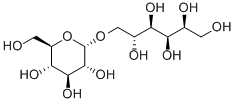Maltodextrin
Synonym(s):Maltodextrin
- CAS NO.:9050-36-6
- Empirical Formula: C12H22O11
- Molecular Weight: 342.29648
- MDL number: MFCD00146679
- EINECS: 232-940-4
- SAFETY DATA SHEET (SDS)
- Update Date: 2025-12-17 09:49:17

What is Maltodextrin?
Description
Maltodextins are purified, concentrated, nonsweet, nutritive carbohydrates made by hydrolyzing com starch. It occurs as a white, slightly hygroscopic powder, as granules of similar description, or as a clear to hazy solution in water. Powders or granules are freely soluble or readily dispersible in water. A solution of maltodextrin is characterized by a bland flavor, smooth mouthfeel, and short texture, and can partially or totally replace fat in a variety of formulations. Maltodextrins can also be used to replace fats in extruded high fiber cereals and snacks. Theyare currently used commercially for fat replacement in salad dressings, dips, margarine, and frozen desserts. As fat replacers, maltodextrins furnish only four calories per gram, while fats furnish nine calories per gram.
Description
Maltodextrin is a polysaccharide that is used primarily in foods and beverages as a thickener, sweetener, and/or stabilizer. It is a relatively short-chain polymer (some would call it an oligomer); commercial products contain an average of ≈3 to ≈17 glucose?units per chain. It is manufactured by partially hydrolyzing grain starches, usually corn or wheat.
Because maltodextrin is safe, inexpensive, and extremely water-soluble, it is used widely as a food additive in a variety of products, ranging from infant formula to ice cream to salad dressing to peanut butter to beer. It is a supplemental ingredient in sweeteners such as sucralose and stevia.
Maltodextrin is not as good a sweetening agent as sucrose (common sugar), but it has as much calorie content as the equivalent amount of sugar. Obese individuals and diabetics should be aware that a food contains maltodextrin before consuming it; it is a listed ingredient on food labels.
Despite these caveats, maltodextrin consumption is increasing steadily. According to Business Wire, the market will expand by >5% annually through 2020, when global sales will reach >US$3 billion.
Chemical properties
White powder or solution from partial hydrolysis of wheat or corn starch.
Chemical properties
Maltodextrin occurs as a nonsweet, odorless, white powder or granules. The solubility, hygroscopicity, sweetness, and compressibility of maltodextrin increase as the DE increases. The USP32– NF27 states that it may be physically modified to improve its physical and functional characteristics.
The Uses of Maltodextrin
Maltodextrin is an oligosaccharide that is derived from starch. Maltodextrin is commonly used as a food additive and in the production of candies and sodas.
The Uses of Maltodextrin
maltodextrin is a polysaccharide obtained most often from corn, potato, or rice starch. It is considered to be absorbent, and skin conditioning. It can also be employed as an emulsion stabilizer and/or a film former. Maltodextrin is incorporated into a variety of cosmetic preparations, including face powders, makeup, creams, lotions, gels, and soaps.
The Uses of Maltodextrin
Short-chain saccharide polymers obtained from the partial acid or enzymatic hydrolysis of starch, in the same manner as corn syrup except the conversion process is stopped at an earlier stage. It consists of D-glucose units linked principally by alpha-1,4 bonds, has a dextrose equivalent of less than 20 and basically is not sweet and is not fermentable. It has fair solubility. It functions as a bodying agent, bulking agent, texturizer, carrier, and crystallization inhibitor. It is used in crackers, puddings, candies, and sugar-free ice cream.
What are the applications of Application
Maltodextrin is an oligosaccharide that is derived from starch
Production Methods
Maltodextrin is prepared by heating and treating starch with acid and/or enzymes in the presence of water. This process partially hydrolyzes the starch, to produce a solution of glucose polymers of varying chain length. This solution is then filtered, concentrated, and dried to obtain maltodextrin.
General Description
Maltodextrin is a saccharide polymer that can be classified as a carbohydrate. It can be produced by acid hydrolysis of the starch. The powdered material formed after purification and spray drying can be used in a variety of food and beverage products. It can be used as a good source of energy in food products with a value of 16 kJ/g.
General Description
Maltodextrin is a polysaccharide produced from starch by partial enzymatic hydrolysis of starch. Starch (amylum) is a carbohydrate consisting of a large number of glucose units linked by glycosidic bonds and is present in a large quantities in corn, potatoes, wheat etc Maltodextrin has a dextrose equivalence less than 20 which indicates that it has long carbohydrate chains along with 2-3% glucose and 5-7% maltose and is available in white hygroscopic spray-dried powder which is slightly sweet almost flavourless. It is soluble and readily dispersible in water and slightly soluble to almost insoluble in alcohol. The body digests Maltodextrin as a simple carbohydrate and thus can be easily converted to instant energy. Due to this quality it is used in sports drinks and quick energy satchels for endurance athletes. Use of Maltodextrin is also dependant on the grade that is the DE value for instance MD with low DE value are stickier and thus is used in gelatinous products like syrups and jams whereas high DE value MD freeze better and is used as a bulking agent in ice creams.
Pharmaceutical Applications
Maltodextrin is used in tablet formulations as a binder and diluent
in both direct-compression and wet-granulation or agglomeration
processes. Maltodextrin appears to have no adverse effect on
the rate of dissolution of tablet and capsule formulations;
magnesium stearate 0.5–1.0% may be used as a lubricant. It has
been used as a carrier in a spray-dried redispersible oil-in-water
emulsion to improve the bioavailability of poorly soluble drugs.Maltodextrin may also be used as a tablet film former in aqueous
film-coating processes. Maltodextrin grades with a high DE value
are particularly useful in chewable tablet formulations.
Maltodextrin may also be used in pharmaceutical formulations
to increase the viscosity of solutions and to prevent the crystallization
of syrups. Therapeutically, maltodextrin is often used as a
carbohydrate source in oral nutritional supplements because
solutions with a lower osmolarity than isocaloric dextrose solutions
can be prepared. At body osmolarity, maltodextrin solutions
provide a higher caloric density than sugars.
Maltodextrin is also widely used in confectionery and food
products, as well as personal care applications.
Safety Profile
When heated to decomposition it emits acrid smoke and irritating fumes.
Safety
Maltodextrin is a readily digestible carbohydrate with a nutritional value of approximately 17 kJ/g (4 kcal/g). In the USA, it is generally recognized as safe (GRAS) as a direct human food ingredient at levels consistent with current good manufacturing practices. As an excipient, maltodextrin is generally regarded as a nonirritant and nontoxic material.
Storage
Maltodextrin is stable for at least 1 year when stored at a cool
temperature (<30°C) and less than 50% relative humidity.
Maltodextrin solutions may require the addition of an antimicrobial
preservative.
Maltodextrin should be stored in a well-closed container in a
cool, dry place.
Incompatibilities
Under certain pH and temperature conditions maltodextrin may undergo Maillard reactions with amino acids to produce yellowing or browning. Incompatible with strong oxidizing agents.
Regulatory Status
GRAS listed. Included in the FDA Inactive Ingredients Database (oral tablets and granules). Included in nonparenteral medicines licensed in the UK. Included in the Canadian List of Acceptable Non-medicinal Ingredients.
Properties of Maltodextrin
| Melting point: | 240 °C (dec.) (lit.) |
| storage temp. | room temp |
| solubility | H2O: 0.1 g/mL hot, complete, yellow to very deep yellow |
| form | powder |
| appearance | white to yellow powder |
| color | yellow |
| Odor | at 100.00?%. odorless |
| InChI | InChI=1/C12H22O11/c13-1-3-5(15)6(16)9(19)12(22-3)23-10-4(2-14)21-11(20)8(18)7(10)17/h3-20H,1-2H2/t3?,4?,5-,6?,7?,8?,9?,10-,11+,12-/s3 |
| CAS DataBase Reference | 9050-36-6 |
| EPA Substance Registry System | Maltodextrin (9050-36-6) |
Safety information for Maltodextrin
Computed Descriptors for Maltodextrin
| InChIKey | GUBGYTABKSRVRQ-CKGNGCRFNA-N |
| SMILES | C1(CO)O[C@H](O[C@H]2C(O)C(O)[C@@H](O)OC2CO)C(O)C(O)[C@@H]1O |&1:4,6,11,21,r| |
Maltodextrin manufacturer
New Products
4,4-Difluoropiperidine hydrochloride tert-butyl 9-methoxy-3-azaspiro[5.5]undecane-3-carboxylate Indole Methyl Resin N-Isopropylurea N,N-Dicyclohexylcarbodiimide(DCC) MELDRUMS ACID 5-METHYLISOXAZOLE-4-CARBOXYLIC ACID Magnessium Bis glycinate Zinc ascorbate 1-bromo-2-butyne 2-acetamidophenol 9(10H)-anthracenone Erythrosin B, 4-Piperidinopiperidine 2-((4-morpholinophenylamino) (methylthio) methylene) malononitrile 2,4-dihydroxybenzaldehyde 3-(4-morpholinophenylamino)-5-amino-1H-pyrazole-4-carbonitrile Methyl 2-methylquinoline-6-carboxylate 2,6-dichloro-4-nitropyridine 4-Bromo-2-chlorobenzonitrile 2-(benzylamino)acetic acid hydrochloride 4-(tert-Butoxycarbonylamino)but- 2-ynoic acid 3,4-dihydro-2H-benzo[b][1,4]dioxepine 1-Phenyl-1-cycloprppanecarboxylicacidRelated products of tetrahydrofuran








You may like
-
 Maltodextrin 99%View Details
Maltodextrin 99%View Details
9050-36-6 -
 Maltodextrine powder CAS 9050-36-6View Details
Maltodextrine powder CAS 9050-36-6View Details
9050-36-6 -
 Maltodextrin CAS 9050-36-6View Details
Maltodextrin CAS 9050-36-6View Details
9050-36-6 -
 Maltodextrin ExiPlus CAS 9050-36-6View Details
Maltodextrin ExiPlus CAS 9050-36-6View Details
9050-36-6 -
 MALTODEXTRINE POWDER CAS 9050-36-6View Details
MALTODEXTRINE POWDER CAS 9050-36-6View Details
9050-36-6 -
 Dextrin from maize starch CAS 9050-36-6View Details
Dextrin from maize starch CAS 9050-36-6View Details
9050-36-6 -
 Maltodextrin CAS 9050-36-6View Details
Maltodextrin CAS 9050-36-6View Details
9050-36-6 -
 Maltodextrin Starch PowderView Details
Maltodextrin Starch PowderView Details
9050-36-6
